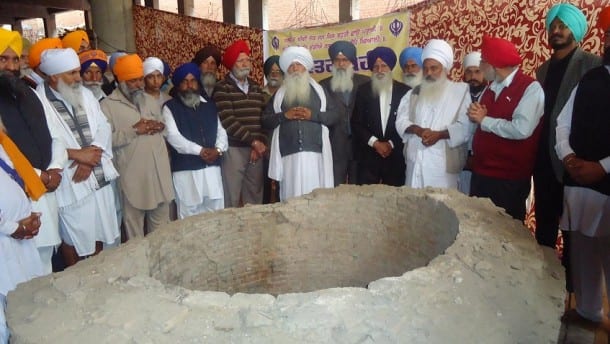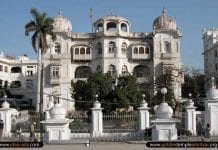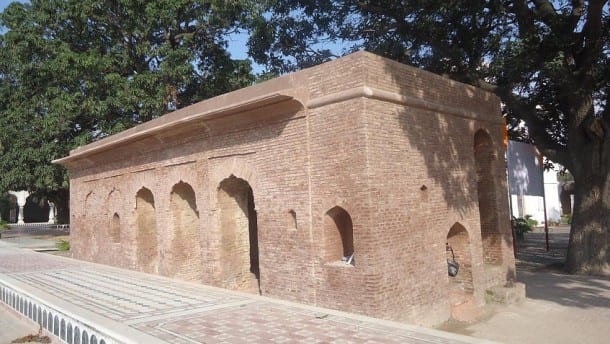


KHADUR SAHIB (TARN TARAN), Punjab—Khadur Sahib is a historical town, sanctified by the visit of eight Sikh Gurus. The second Sikh Guru Sri Guru Angad Dev Ji preached Gurbani, developed the Gurmukhi script, established Mal Akhara, got the Janam Sakhi written from Bhai Perra Mokha ji, broke arrogance of Hamayun and influenced him with spiritual ideas, prepared Gurumukhi Primers and served mankind for nearly 13 years during his Guruship period. His devoted wife Mata Khiwi, contributed to the practice of “Langar” (free community kitchen) over at Khadur Sahib.
Description of sacred town can also be found in Bani of Sri Guru Granth Sahib and Bhai Gurdas Ji.
The historical town has many heritage buildings but these could not get formal recognition of having heritage status. Old ‘Baran-dari’ (the building having 12 doors) and ‘Khoohi’ (well) situated in the complex of Gurdwara Tapiana Sahib fall in that category.
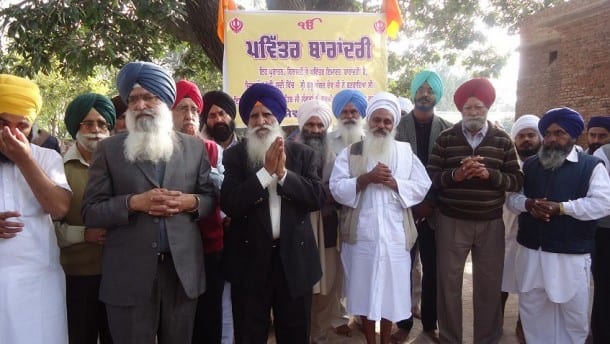


Demand of verification and research of these historical buildings has been raised time to time since. In particular Baba Sewa Singh Kar Sewa Wale, noted that Sikh scholar Dr. Raghbir Singh Bains and academician Principal Dr. Bhagwant Singh Khehra have made persistent efforts in this direction. Dr. Bains had written to archaeological agency of union government to identify whether the buildings were constructed during the period of Guru Angad Dev Ji. The central agency showed no interest in this practice. Consequently, the task remained undone for long. Dr. Bains then wrote a letter to Punjab’s archaeological department urging it to research the buildings and got good response. Concerned director assigned this crucial duty to archaeological officer Rajinder Singh Bath. Bath along with his team members thoroughly examined the architecture of the buildings and material used in it.
As per the research report, there was a garden where Gurdwara Tapiana Sahib is situated now. Due to the fact that it was a lonely and quiet place, Guru Angad Dev ji did meditation there. History of the Sikh shrine also tells the same saga.
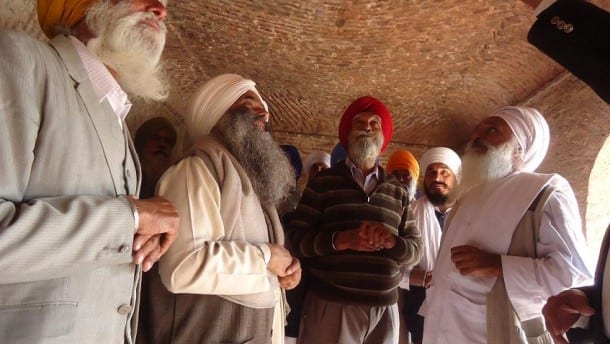


On the bank of the Gurdwara’s sacred sarovar (pond), the old ‘Baran-dari’ was constructed. The arcs, design of ceilings and small ‘Lakhauri’ bricks suggested that such buildings were constructed in the beginning of 16th century, the same time period as Guru Angad Dev ji.
This assessment suggests that Guru Angad Dev ji used to address his followers and preach them in this building.
In addition, there is an old ‘Khoohi’ (well) in basement of modern Mata Khivi Langar Hall situated in complex of Gurdwara Tapiana Sahib. This ‘Khoohi’ was also constructed with the same bricks and material as that of ‘Baran-dari’.
It suggests that the ‘Khoohi’ was also built in the same period thereby belonging to Guru Angad Dev ji. It is a well known historical fact that Mata Khivi Ji used to prepare food for Sangat. This fact can also be found in Guru Granth Sahib. As the latest research suggests, the water of this ‘Khoohi’ was used by Mata Khivi ji for ‘Langar’.
In a nut shell, the Archaeological department’s team has concluded that that the old ‘Baran-Dari’ might have been constructed by Guru Angad Dev ji.
Cheering over the research report, Baba Sewa Singh has assured that signs and buildings related to Guru Sahib would be preserved with due respect as per suggestions of experts and scientist. “These precious buildings are our true heritage which has an ability to inspire the young generation not to abandon their heritage values” he added.
